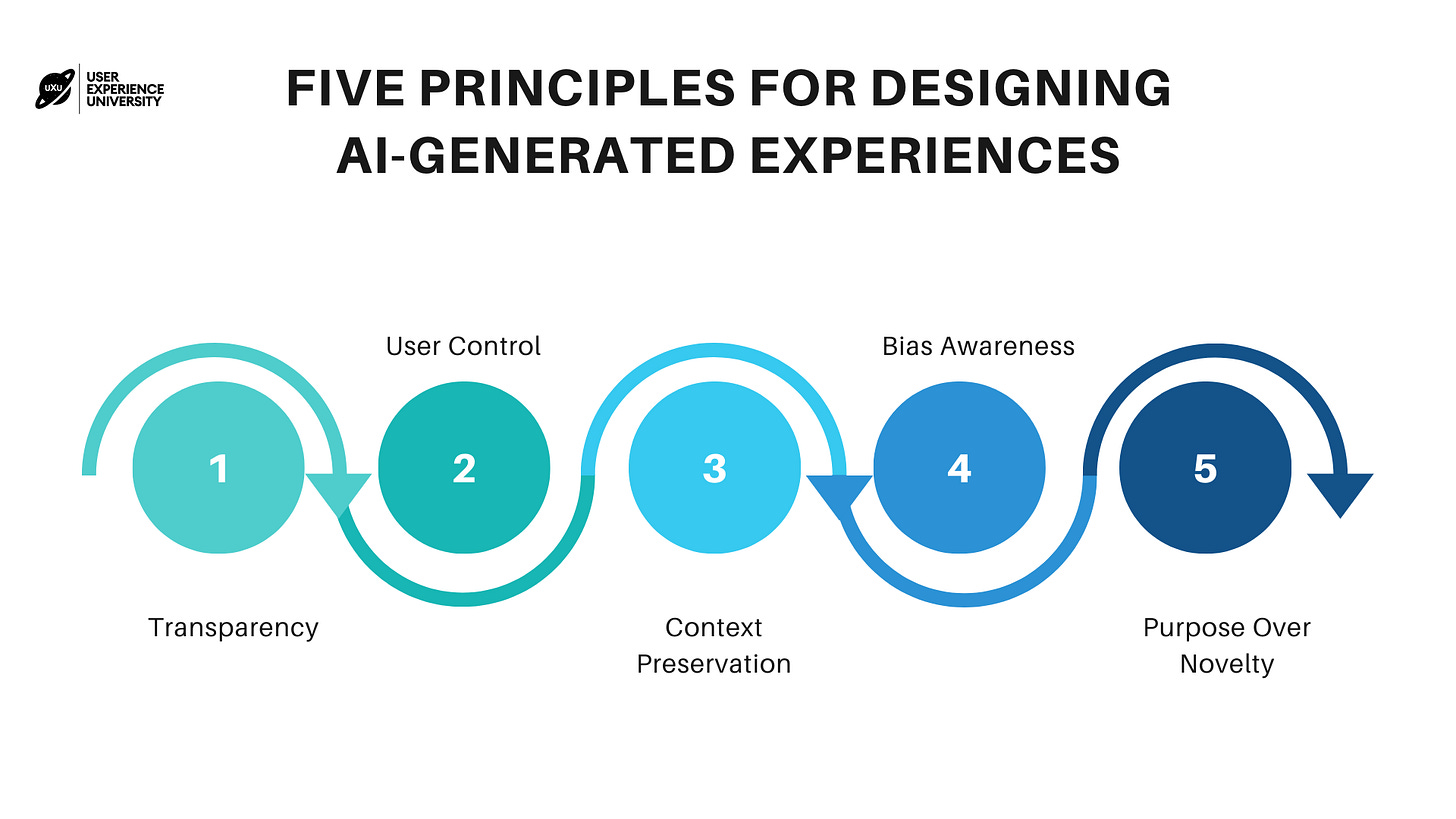Designing for a World Where AI Creates the Experience
Five UX principles for AI-generated interactions
If AI can craft the story, the visuals, and the interactions… what’s left for us to design? Everything that matters.
Generative AI is no longer a novelty… it’s shaping experiences from the ground up. Entire conversations, visuals, and even personas can be created in seconds. But here’s the challenge: when AI becomes the storyteller, the designer, and the researcher, the UX role doesn’t shrink. It becomes more critical.
Because the future isn’t about replacing us with AI, it’s about designing with AI while protecting what makes an experience human.
Why Synthetic Experiences are changing UX forever
What “Synthetic Experience” really means
Five UX principles for AI-generated interactions
UXCON25 spotlight: Designing for the AI era
The biggest pitfalls
Real-world examples of AI done right
Resource corner
Why Synthetic Experiences Demand Attention
A synthetic experience is an interaction built with AI-generated components—think deep fake interviews, AI personas, or adaptive learning environments that shape themselves in real time.
Done right, they can be more personal, more immersive, and more engaging than anything we’ve built before. Done wrong, they become manipulative, uncanny, or just plain untrustworthy.
What “Synthetic Experience” Means for UX
Synthetic experiences can:
Simulate conversations with AI-powered personas
Generate media and content dynamically
Adapt flows in response to AI analysis of user behavior
They are fast, scalable, and compelling but they also carry risks that demand a UX strategy grounded in ethics, transparency, and control.
Five Principles for Designing AI-Generated Experiences
Transparency
Tell users what’s AI-generated and why. Surprises erode trust.User Control
Give people the ability to edit, reject, or restart AI outputs.Context Preservation
AI should enhance, not disrupt, the experience flow.Bias Awareness
Actively test for and mitigate bias in AI-generated content.Purpose Over Novelty
Just because AI can do it doesn’t mean it should. Every AI element should have a clear user benefit.
UXCON25 Spotlight: Designing for the AI Era
This week only, you can lock in your UXCON25 ticket at our best price 25% off until Sunday at midnight.
And you won’t want to miss what’s waiting for you there.
We’ll be exploring:
How to design interfaces that make AI feel trustworthy
When to use synthetic users and when not to
The new rules for blending human creativity with AI capability
🎟️ Reserve your ticket now and be part of the conversation shaping the future of AI in UX
Pitfalls to Avoid
Treating AI outputs as inherently correct
Hiding AI use from the user
Using synthetic personas without real-world validation
Letting automation replace empathy
Designing for speed over substance
Real UX Scenarios
AI Personas + Real Validation: A research team used AI-generated personas to brainstorm scenarios, then validated every key insight with real interviews.
(Source: NN/g)Adaptive AI Interfaces: Adobe design teams created flows that adapt to a user’s style while keeping the experience coherent and human-centered.
(Source: Adobe Design)
Resource Corner
Final Thought: The Designer Still Holds the Pen
AI can write, illustrate, and simulate but it can’t care. It can’t intuit the emotional undercurrents of a moment or foresee the unintended consequences of a design choice.
That’s our role. Not to compete with AI, but to guide it. To decide why an AI-generated experience exists, not just how it works.
Because in the end, AI can create an experience but only we can make it worth having.






